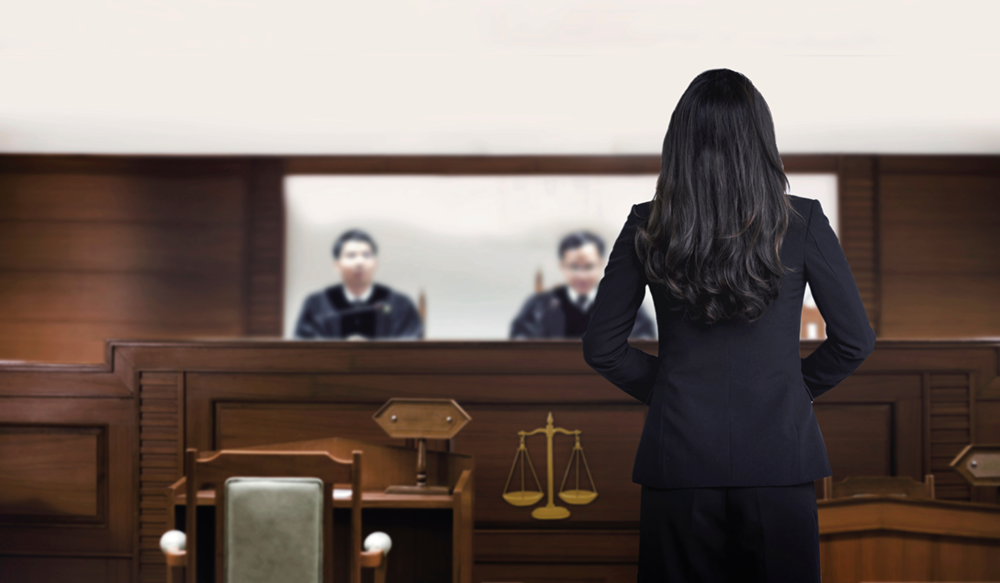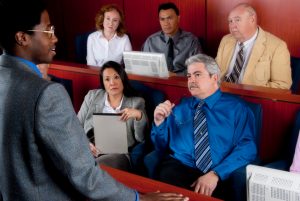Elevate Your Legal Practice with Ingenious Trial Presentations: Finest Practices and Recommendations
Elevate Your Legal Practice with Ingenious Trial Presentations: Finest Practices and Recommendations
Blog Article
Navigating the Complexities of Test Presentations: Tips for Seamless Delivery and Engaging Arguments
In the world of legal process, the art of trial presentation stands as an essential factor of success. As attorneys browse the intricate internet of courtroom characteristics, the ability to flawlessly provide debates and evidence while astounding the court's focus ends up being paramount. The intricacies inherent in trial discussions require a fragile equilibrium of finesse, ability, and strategy. By honing methods that make sure a sleek delivery and crafting compelling debates that reverberate with the audience, legal specialists can significantly boost their campaigning for. In a world where persuasion preponderates, grasping the details of trial presentations is not simply an alternative yet a necessity for those seeking to prevail in the courtroom.

Understanding Trial Goals
To properly navigate a test, it is essential to have a clear understanding of the goals that require to be attained. Prior to entering the courtroom, legal teams need to specify their objectives and wanted outcomes. These objectives act as directing concepts throughout the test, forming methods and affecting decision-making procedures.
Recognizing test purposes entails a comprehensive analysis of the case, legal precedents, and the client's best interests. Trial Presentations. It requires a meticulous examination of the facts, identifying key issues, and preparing for possible obstacles. By establishing quantifiable and particular goals, attorneys can customize their discussions and disagreements to straighten with the wanted outcomes
Additionally, a clear understanding of trial objectives makes it possible for lawful teams to prioritize proof, witnesses, and lawful disagreements effectively. It allows for the growth of a systematic narrative that reverberates with the court and jury, strengthening the total situation presentation.

Organizing Proof Successfully
Having a clear understanding of test goals lays the foundation for arranging proof efficiently in legal proceedings - Trial Presentations. By straightening the discussion of proof with the preferred outcomes of the trial, lawful teams can strengthen their debates and improve their persuasiveness. One important aspect of organizing proof is categorization. Organizing proof based on motifs or importance to particular legal components can assist streamline the discussion and make complicated details a lot more digestible for the court or jury.
An additional key element in arranging proof successfully is developing a rational circulation. Presenting proof in a consecutive and meaningful way can assist construct an engaging narrative that sustains the lawful arguments being made. In addition, using aesthetic help such as timelines, charts, or charts can better enhance the organization resource of proof and aid in clearing up intricate relationships or series of occasions.
Additionally, making sure that all proof presented is acceptable and relevant to the instance is necessary. Unnecessary or inadmissible evidence can take away from the toughness of the argument and potentially hurt the integrity of the presenting event. A careful evaluation and choice procedure must be embarked on to consist of only the most lawfully sound and impactful evidence in the trial discussion.
Crafting Convincing Stories
Crafting compelling stories plays a critical duty in providing persuasive debates during lawful procedures. When creating a narrative for a test presentation, it is essential to develop a clear storyline that highlights crucial points and attaches them in a coherent fashion. By weaving together proof, testimony, and lawful arguments right into a persuasive and natural story, lawful experts can properly promote for their customers and increase the probability of a favorable result in the court room.
Grasping Aesthetic Aids
Effective usage of visual aids is crucial to enhancing the impact and clearness of test presentations. Visual help, when made use of strategically, have the power to simplify intricate details, reinforce essential factors, and leave a lasting impression on the discretionary. To understand visual aids in trial presentations, it is critical to ensure that they are clear, concise, and appropriate to the disagreements being made.
When including aesthetic aids, such as charts, charts, pictures, or timelines, into a trial presentation, it is vital to maintain them aesthetically appealing yet professional. The visuals should complement the verbal arguments, offering a graph of the information being talked about without overwhelming the audience with unnecessary details.
Moreover, practicing with the aesthetic aids beforehand is necessary to make certain a smooth delivery throughout the test. Acquainting oneself with the web content, changes, and timings of each aesthetic aid can help keep the circulation of the discussion and stop technical glitches that may emerge.
Supplying Impactful Closing Debates
An engaging closing disagreement offers as the conclusion of a test presentation, enveloping the core narrative and convincing the judge and jury in the direction of a beneficial choice. Begin by describing the main disagreements that support your customer's position, highlighting why the proof provided throughout the test supports your narrative.
In addition, integrating psychological appeal can additionally reinforce your closing disagreement. By attaching and humanizing have a peek here the case on a personal degree with the decision-makers, you can evoke empathy and understanding, affecting their assumption of the facts provided. In addition, reiterating the legal requirements that have to be met for a positive ruling can strengthen the legitimacy of your placement. Ultimately, a well-crafted closing disagreement must leave a long-term impression, compelling the judge and jury to rule in your customer's support.
Conclusion
Finally, mastering trial presentations includes understanding goals, organizing evidence, crafting narratives, using visual aids, and delivering impactful closing arguments. By implementing these strategies effectively, lawyers can present their instance flawlessly and make engaging debates in the courtroom. It is important to navigate the complexities of test discussions with accuracy and skill to achieve success in lawful process.
By lining up the presentation of evidence with the wanted end results of the test, Recommended Site legal groups can reinforce their disagreements and improve their persuasiveness (Trial Presentations). To master aesthetic help in trial discussions, it is critical to make sure that they are clear, concise, and relevant to the debates being made
An engaging closing argument offers as the conclusion of a trial discussion, encapsulating the core story and encouraging the judge and court in the direction of a beneficial decision. Begin by detailing the primary debates that sustain your client's placement, highlighting why the proof provided throughout the test supports your narrative.In final thought, grasping trial discussions includes understanding goals, organizing proof, crafting narratives, using visual help, and delivering impactful closing disagreements.
Report this page